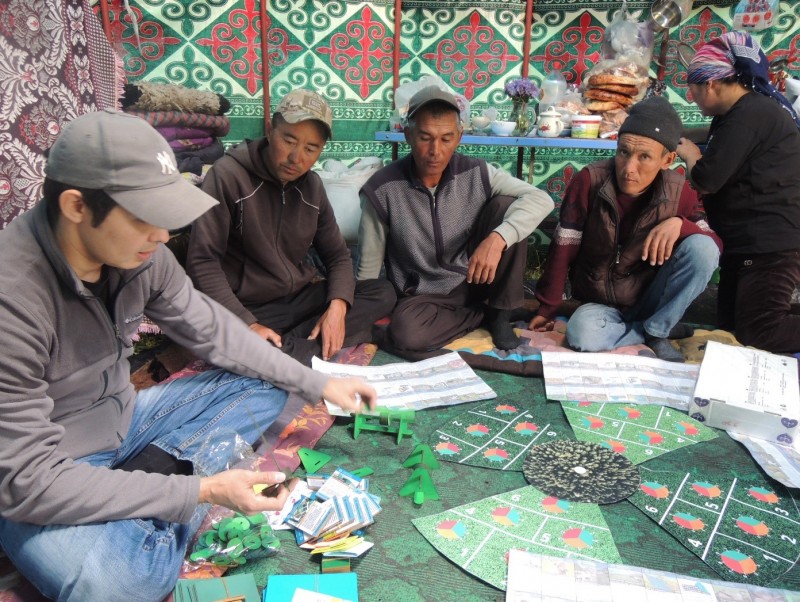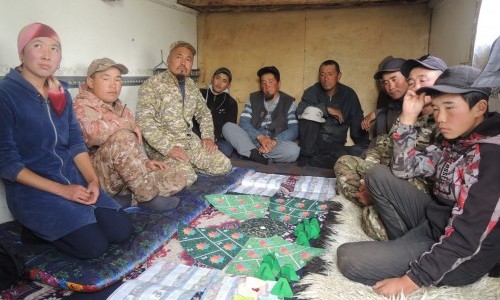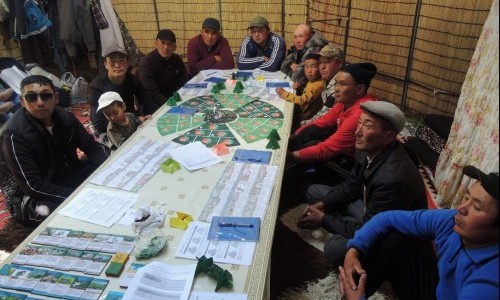
Specialists from the "СAMР Alatoo" Foundation conducted a series of seminars for resource users in the Naryn region.
The training took place on five pastures located in the Naryn, At-Bashi, and Jergetal aiyl aimaks. The seminars gathered 67 participants, including shepherds, their assistants, farmers, and foresters. More than a third of the participants were women.
The seminar program consisted of five key points: an introduction to the project, its goals and objectives, a discussion of annual plans and current changes, working with maps and planning livestock grazing on the pastures, a simulation game explaining the "Response Index Grazing" (RIG) method for resource management and use, and attracting new shepherds to use the RIG methodology. It should be noted that this method helps regulate animal grazing without harming plants, which ultimately leads to increased pasture productivity.
At the beginning of each training session, participants received detailed information about the project's goals and the main principles of the RIG method, such as grazing frequency, grazing intensity, and the possibility of grass cover growth and recovery. These principles were explained using examples from shepherds who have applied this method within the project over the past few years. Additionally, the project team paid special attention to the process of visual assessment and pasture monitoring before and after each grazing period. Shepherds were recommended to photograph the sites for objective land assessment.
During the discussion on the condition of summer pastures, participants expressed several common views. First, 2024 turned out to be rainy, which positively affected pasture vegetation. Shepherds noted a significant improvement in the grass cover compared to previous years. Second, the problem of uncontrolled grazing of cattle and horses remains, complicating proper pasture use. For example, the Kok-Dobo pasture currently has about 30 herds of horses. Participants suggested that owners should be required to assign livestock to specific areas or be fined for non-compliance with this rule.
Moreover, users were interested in seeding pastures with perennial grasses to combat the increase in inedible grasses. The need to explain pasture load norms to shepherds was also discussed, as the livestock population increases each year and many incorrectly assess the capacity of the areas.
Finally, the issue of a temporary grazing ban on some pastures in the Naryn region to restore their productivity was raised. However, shepherds expressed concern about where to relocate the livestock if a moratorium is introduced, given that other pastures are also overloaded.
The practical part of the training included a simulation game. As a result of the game, which lasted three simulated years, participants came to several key conclusions. In the first year, considerable time was spent explaining the rules and cards, which is considered normal. Despite initial difficulties, participants quickly mastered the game process. In the first year, they began acquiring equipment cards but did not account for available financial resources, leading to a money shortage.
The second year was a turning point, as players learned to plan and allocate resources more effectively, considering energy and card purchases. Recommendations to improve game mechanics emerged: participants suggested including energy costs on the cards, which are currently not accounted for.
The game was conducted with 8-10 participants, divided into 4-6 teams. The most active participants maintained interest, while less engaged ones gradually left the game. Ultimately, participants noted that dividing pastures into more sections brings the team more points, confirming the effectiveness of the RIG methodology in increasing pasture productivity.


Итоги пастбищного сезона 2018 года были подведены на очередном заседании районной пастбищной комиссии (РПК).
MoreThe development of the unified method, "Monitoring Pastures at the Local Level," is nearing completion.
MoreЧетыре новых моста построены в 2018 году в Кыргызстане при поддержке ОФ “CAMP Алатоо” и Швейцарской ассоциации “Памирские...
More